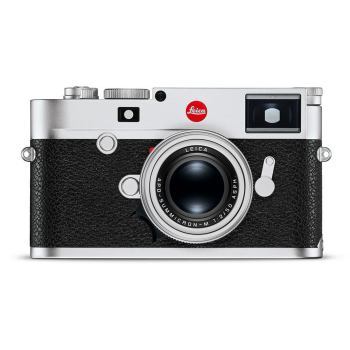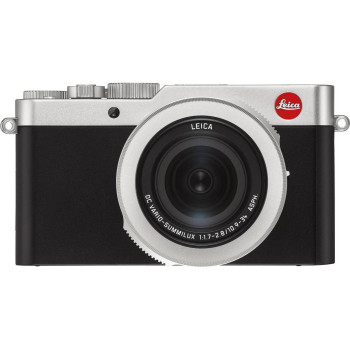- Exceptional image detail
- Engaging shooting experience
- Top-notch build quality
- High-quality images
- Compact and portable
- Advanced features for its size
- High cost
- No video capabilities
- Limited battery life
- Small sensor compared to full-frame
Leica M10-R vs Leica D-Lux 7
When it comes to high-end photography, Leica cameras are often the first choice for many enthusiasts and professionals. Two popular models from the renowned brand are the Leica M10-R and the Leica D-Lux 7. While both cameras share the Leica name, they cater to different needs and offer distinct features. In this comparison, we'll delve into the details of each camera, highlighting their strengths and weaknesses.
Sensor and Image Quality
The Leica M10-R is a rangefinder camera that boasts a 40.89-megapixel full-frame sensor, making it ideal for capturing high-resolution images with exceptional detail and dynamic range. The sensor's size and quality enable the M10-R to produce outstanding results, especially in low-light conditions. On the other hand, the Leica D-Lux 7 features a 17-megapixel Four Thirds sensor, which, although smaller, still delivers excellent image quality with a high level of detail and color accuracy.
Lens and Focal Length
One of the primary differences between the two cameras lies in their lens systems. The Leica M10-R is designed to work with interchangeable lenses, offering users a wide range of focal lengths and apertures to choose from. This flexibility makes it an excellent choice for photographers who need to adapt to various shooting situations. In contrast, the Leica D-Lux 7 comes equipped with a fixed 24-75mm (equivalent) lens, which provides a convenient zoom range for everyday photography. While the D-Lux 7's lens is versatile, it may not offer the same level of optical quality as some of the interchangeable lenses available for the M10-R.
Ergonomics and Build Quality
Leica cameras are known for their exceptional build quality, and both the M10-R and D-Lux 7 live up to this reputation. The M10-R features a compact, ergonomic design with a magnesium alloy body, making it comfortable to hold and use for extended periods. The camera's controls are intuitive, with a focus on manual operation that will appeal to photographers who value tactile feedback. The Leica D-Lux 7, while smaller and more compact, also boasts a sturdy build with a sleek, modern design. Its controls are similarly well-designed, although some users may find the camera's smaller size makes it more challenging to operate.
Autofocus and Performance
The Leica M10-R relies on manual focusing, which can be a blessing or a curse depending on the photographer's preferences. While some users will appreciate the level of control this offers, others may find it slower and more cumbersome than the autofocus systems found in other cameras. The Leica D-Lux 7, on the other hand, features a fast and accurate autofocus system, making it better suited for capturing moving subjects or shooting in situations where speed is essential.
Video Capabilities
Both cameras offer video recording capabilities, although the Leica M10-R is limited to 1080p at 30fps. The Leica D-Lux 7, by contrast, can record 4K video at 30fps, as well as 1080p at up to 120fps for slow-motion footage. While neither camera is designed specifically for video production, the D-Lux 7's more advanced capabilities make it a better choice for photographers who also want to capture high-quality video.
Conclusion
In conclusion, the Leica M10-R and Leica D-Lux 7 are two distinct cameras that cater to different needs and preferences. The M10-R is a high-end rangefinder camera that excels in terms of image quality, build, and manual operation, making it an excellent choice for photographers who value these aspects. The Leica D-Lux 7, on the other hand, offers a more compact and versatile package with a fixed lens, fast autofocus, and advanced video capabilities, making it suitable for everyday photography and those who want a convenient, high-quality camera.
Ultimately, the decision between these two Leica cameras will depend on your specific needs and preferences. If you're looking for a high-end camera with exceptional image quality and manual operation, the M10-R may be the better choice. However, if you prioritize convenience, versatility, and advanced autofocus, the Leica D-Lux 7 is definitely worth considering. As with any Leica cameras, both models offer a unique shooting experience that's sure to please even the most discerning photographers.


















